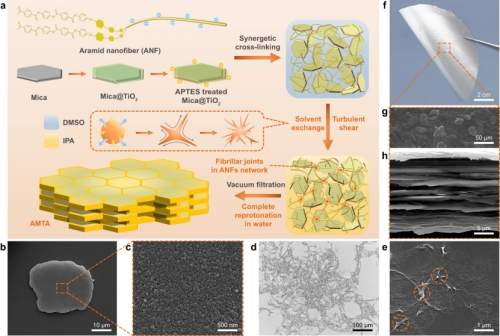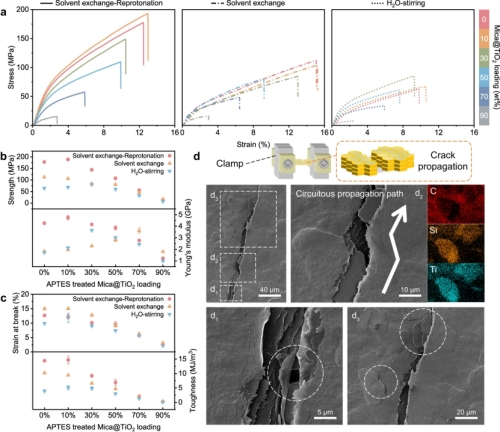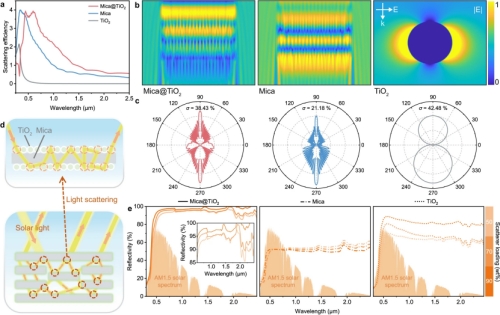Passive daytime radiation cooling (PDRC) technology achieves simple and efficient outdoor cooling by adjusting the reflectivity of objects in the solar spectrum and the emissivity under atmospheric windows. It is considered an effective measure to solve energy, environmental, and safety problems caused by extreme high temperature weather in summer.While achieving high reflectivity, the above-mentioned strategies typically mean losses of other applicable performance (e.g., strength, modulus, durability, and thickness), which makes PDRC films unable to meet the long-term cooling requirements of outdoor devices in hot summers.Therefore, how to balance the optical properties and other practical performance of materials through reasonable design has become one of the challenges for PDRC to move towards outdoor applications.
Professor Qiang Fu/Prof. Hua Deng's team from the College of Polymer Science and Engineering utilized the “Solvent exchange-Reprotonation" strategy to construct a dendritic colloid based on aramid nanofibers (ANFs) and mica/titanium dioxide(Mica@TiO2)Layered PDRC thin film (AMTA) of core-shell scatterers.
“Passive daytime radiative cooling is a promising path to tackle energy, environment and security issues originated from global warming. However, the contradiction between desired high solar reflectivity and necessary applicable performance is a major limitation at this stage. Herein, we demonstrate a “Solvent exchange-Reprotonation” processing strategy to fabricate a lamellar structure integrating aramid nanofibers with core-shell TiO2-coated Mica microplatelets for enhanced strength and durability without compromising optical performance. Such approach enables a slow but complete two-step protonation transition and the formation of three-dimensional dendritic networks with strong fibrillar joints, where overloaded scatterers are stably grasped and anchored in alignment, thereby resulting in a high strength of ~112 MPa as well as excellent environmental durability including ultraviolet aging, high temperature, scratches, etc. Notably, the strong backward scattering excited by multiple core-shell and shell-air interfaces guarantees a balanced reflectivity (~92%) and thickness (~25 μm), which is further revealed by outdoor tests where attainable subambient temperature drops are ~3.35 °C for daytime and ~6.11 °C for nighttime. Consequently, both the cooling capacity and comprehensive outdoor-services performance, greatly push radiative cooling towards real-world applications.” (Abstract)
The work was published in Nature Communicationsunder the title of "Thin Laminar Films with Enhanced Mechanical Properties for Durable Radiative Cooling" (Nat. Commun. 2023, 14, 6129) in October, 2023. The first author of this paper is Lianfu Xiong, a master student of SCU.The research work was funded by the National Key Research & Development Plan of China (2022YFA1205200, H.D.).

Fig. 1: Illustration of the fabrication process and microstructure characterizations.

Fig. 2:Mechanical properties and multiscale extrinsic toughening mechanisms.

Fig.3:Optical properties comparison among Mica@TiO2, Mica, and TiO2.
